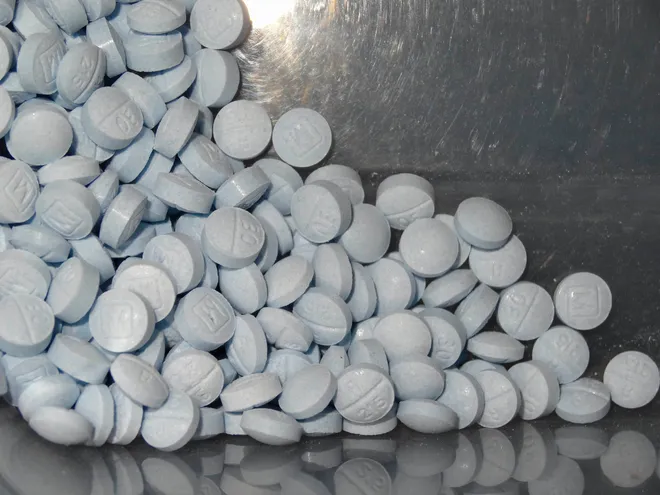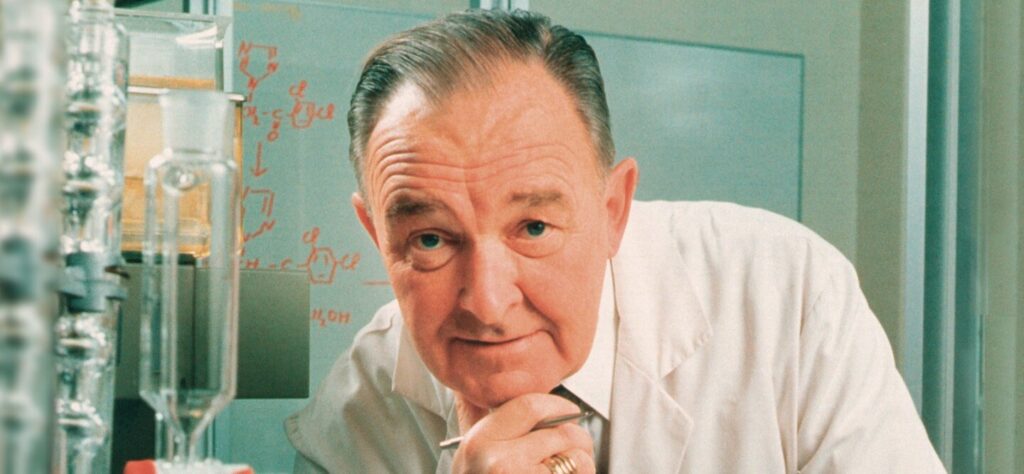
Fentanyl is now the leading cause of accidental overdose deaths in people aged 18-45. The Centers for Disease Control and Prevention (CDC) report that Fentanyl deaths have surpassed deaths from motor vehicle accidents, gun violence, heart disease, and COVID-19. In 2021, 71,000 Americans died from synthetic opioid abuse, i.e., Fentanyl.
At the end of 2022, the FDA seized over 50.6 million Fentanyl laced fake prescription pills and over 10,000 pounds of Fentanyl powder. The DEA further estimates that 379 million of those seizures contain potentially dangerous doses of Fentanyl. Most of the Fentanyl is mass-produced in the United States and is manufactured in Mexico and China
The Theory of Three
Looking at the growing number of opiate-related deaths, you may ask yourself, “Where did it all begin?” The author Cicerone has come up with the “Theory of three” overlapping waves, which will help explain how the opioid crisis began:
- Wave One: The opioid crisis kicked off the first wave in 2000, with doctors overprescribing painkillers, leading to mass addiction.
- Wave Two: overlapping opioid deaths involving heroin intensified in 2007 and exceeded opiate deaths by 2015.
- Wave Three: illicit synthetic opioids, which include Fentanyl
A fourth wave is on the horizon and further complicated by stimulants.

Dr. Paul Janssen, The Father of Fentanyl
In Sam Quinones’s book “The Least of Us, True Tales of America and Hope in the Time of Fentanyl and Meth,” he describes Dr. Paul Janssen as ‘obsessed with chemistry and finding new painkillers. Dr. Paul Janssen is the founder of Janssen Pharmaceuticals and the inventor of Fentanyl. “The Least of US” chronologically details how Dr. Paul Janssen obsessively studied the molecular structure of morphine and other opiates. He was trying to create a drug that penetrates the blood-brain barrier at a faster rate.
The image of a ‘mad scientist’ may pop into your head as you read more about Dr. Paul Jansen in Sam Quinones book. A typical non-conformist, Dr. Paul Janseen believed that “good scientists do not need to be supervised.” The author Sam Quinones further explains that “Dr. Paul Janssen was able to envision three-dimensional images of the molecules he was struggling to modify. He would often doodle chemical structures on napkins during meetings.” If you’ve ever watched a science fiction horror movie, the ‘mad scientist’s protagonist is always a genius of some sort, like Dr. Frankenstein in ‘Frankenstein’ or Dr. Emmet Brown in ‘Back to The Future.’ They are all eccentric-looking men working with fictional technology, crossing boundaries while trying to play God.
A Potent Painkiller
Dr. Paul Jansen discovered that when drugs like heroin cross the blood-brain barrier, once in the brain tissue, the drug eventually converts into morphine, slowing the absorption rate. The new molecule crossed the blood-brain barrier more effectively and did not convert into anything other chemical. Fentanyl binds to the body’s opioid receptors controlling pain and emotions. The brain tends to adapt to the drug after chronic use. The euphoric high eventually diminishes, decreasing Fentanyl sensitivity and making it hard to feel pleasure outside of drug use.
A more potent painkiller than morphine, Fentanyl allows a patient to be rapidly sedated for surgery and then walk away post-op with lesser aftereffects. Fentanyl changed surgical anesthesia forever. Before Fentanyl’s anesthetic intravenous use in 1960, anesthesiologists used flammable gas for various surgeries like coronary bypass surgeries. Though Fentanyl is short-acting, it can be reversed quickly with Naloxone.

Fentanyl Addiction and Overdose Symptoms
Fentanyl is 50 to 100 times more potent than heroin. Actiq, Duragesic, and Sublimaze are the prescription names for Fentanyl. A Doctor or healthcare provider typically prescribes Fentanyl in an injection form, a transdermal patch, or oral tablets. Drug dealers mix Fentanyl with heroin, cocaine, methamphetamine, and MDMA. Synthetic Fentanyl sold illegally is found in a powder form and sold in eye drops, blotter paper, nasal sprays, and pill format.
Symptoms related to Fentanyl overdose include:
- Euphoria
- Nausea
- Drowsiness
- Decreased level of consciousness
- Constipation
- Confusion
- Sedation
- Respiratory problems
- Loss of consciousness
When a person overdoses on Fentanyl, their breathing slows down and stops. The person can then become hypoxic. Naloxone can treat Fentanyl overdose and is available as an injectable needle and nasal spray (NARCAN). Unfortunately, many drug dealers mix Fentanyl with other drugs, increasing its potency; in these cases, Naloxone may or may not work.Naloxone should be monitored for at least 2 hours to make sure they do not stop breathing. Healthcare providers or anyone administering a dose of Naloxone to a person who remains hypoxic after administration should call 911 and start CPR. Patients who are receiving

FDA Alerts Regarding Xylazine aka “Tranq,” The “Zombie” Drug
Used primarily for animal anesthesia, Xylazine is a pharmaceutical drug that increases sedation and relaxation in cattle, horses, and other non-human mammals. Veterinarians also use Xylazine as an antiemetic for cats.
Xylazine also goes by the street name “Tranq” and is called the “Zombie drug.” The drug goes by the nickname “Zombie Drug” because it slows down breathing, and the person influenced by the drug takes on a “Zombie,” like the appearance of being zoned out or in a trance. Xylazine lengthens the Fentanyl high, which can lead to a person’s demise.
There have been increasing reports to the FDA regarding the inclusion of Xylazine into heroin, Fentanyl, and other illicit drugs. The FDA further warns healthcare professionals to be aware of the possible overdoses in patients due to Xylazine inclusion because it is unknown if the side effects are reversible with Naloxone. Toxicology screens do not detect Xylazine.
Healthcare providers are encouraged by the FDA to continue to treat suspected drug overdoses with Naloxone. If the patient does not respond, it’s best to question Xylazine exposure and provide appropriate measures. Signs and symptoms of Xylazine use include chronic and severe skin ulcerations.
Although the FDA continues to investigate whether Xylazine is produced illegitimately, it is unknown if the Xylazine taken is illegal or if it comes from the animal drug supply.
Rainbow Fentanyl
Rainbow Fentanyl debuted in August of 2022 as multicolored pills, chalk, and blocks. The DEA suggested that the drug cartels and traffickers use “rainbow-colored” tablets to mask Fentanyl and lure young children and teenagers into drug addiction. Two milligrams of Fentanyl, equal to 10-15 grains of table salt, is considered a lethal dose.
Teenage Fentanyl Deaths
In 2021, overdose deaths for teenagers from 14-18 years old increased to over 94%. With Fentanyl overdoses at an all-time high in California and responsible for almost all drug overdoses in teenagers, Governor Gavin Newsom has signed a budget proposal of 3.5 million dollars to supply middle and high schools with Naloxone. Currently, schools can get Naloxone for free through public health grants.
Some young teens buy pills from drug dealers on social media thinking they are oxycodone, Adderall, or Xanax, laced with Fentanyl. The main problem is not more teens using drugs; the problem is that the drug supply is much more potent.
Solutions To a Growing Problem
Proposals for legislation are to curb the sale of ‘fentapills’ to young adults on social media sites. Republicans have introduced bills to extend sentences for traffickers and sellers who violate the proposed legislation. Schools also need to start educating students regarding Fentanyl. Lawmakers are also seeking laws allowing all amusement parks, stadiums, concert venues, and universities to have Naloxone available in case of an overdose.
Much like how Dr. Frankenstein lost control over his creation “Frankenstein,” this drug has become lethal and dangerous, turning some people into ‘zombies.’ Dr. Paul Jansen probably never considered that his pain killer, Fentanyl, would be addictive or for sale as a street drug and cause people to overdose. Nor did he ever conceive young adults and children would be consuming the drug recreationally.
Perhaps we need go back in time with Dr. Emmet Brown from “Back to the Future,” to bring Dr. Janssen into the present moment. What would Dr. Paul Janssen think about the current Fentanyl crisis? What would he think about the thousands of people who have lost their lives due to Fentanyl overdoses? Would he have gone back in time to make any changes to his invention Fentanyl? Would he offer any solutions? We’ll never know.
Are you looking to add travel and adventure to your life? MedCare Staffing has a variety of long-term and short-term locum tenens assignments. Click here for more information.

